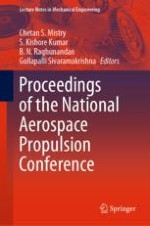2021 | Buch
Proceedings of the National Aerospace Propulsion Conference
herausgegeben von: Prof. Chetan S. Mistry, Dr. S. Kishore Kumar, Dr. B. N. Raghunandan, Gullapalli Sivaramakrishna
Verlag: Springer Singapore
Buchreihe : Lecture Notes in Mechanical Engineering
